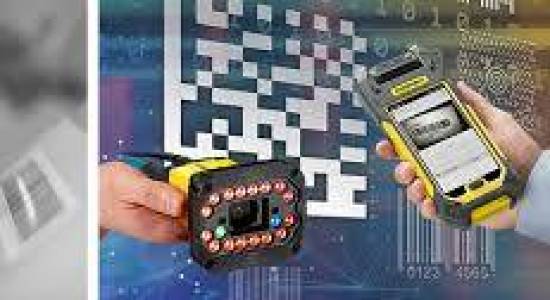Description
RF Barcode Scanning Technology: A Deep Dive
Radio Frequency (RF) barcode scanning technology represents a significant advancement in data acquisition, offering unparalleled speed, accuracy, and range compared to traditional optical scanners. This description details the key features, benefits, and applications of this cutting-edge technology.
What is RF Barcode Scanning?
Unlike optical scanners that require line-of-sight contact with the barcode, RF barcode scanning utilizes radio waves to transmit barcode data wirelessly. Items tagged with RF identification (RFID) tags – which contain encoded barcode information – are read by an RF scanner from a distance, often without the need for direct visibility. This eliminates the bottleneck of manual scanning and allows for high-throughput data collection in a variety of environments.
Key Features and Benefits:
- High-Speed Data Acquisition: Process hundreds or thousands of items per minute, drastically increasing efficiency and productivity.
- Long Read Range: Scan barcodes from several meters away, ideal for fast-moving applications and large-scale inventory management.
- Multi-Item Reading: Simultaneously read multiple barcodes, even when items are stacked or bundled together.
- Non-Line-of-Sight Reading: Overcome obstacles and scan items hidden from view, improving operational flexibility.
- Improved Accuracy: Reduce human error significantly, ensuring accurate data capture every time.
- Durable and Robust: RF scanners are typically designed to withstand harsh environments, including extreme temperatures, moisture, and physical impact.
- Real-time Data Capture: Data is transmitted in real-time, allowing for immediate processing and analysis.
- Integration Capabilities: Seamless integration with existing enterprise resource planning (ERP) systems and other data management platforms.
- Enhanced Security: RFID tags can be equipped with security features to prevent unauthorized access and tampering.
Applications:
RF barcode scanning technology finds applications across numerous industries, including:
- Supply Chain Management: Track goods throughout the supply chain, from manufacturing to retail, improving inventory visibility and reducing losses.
- Warehouse and Logistics: Optimize warehouse operations, streamline picking and packing processes, and improve order fulfillment accuracy.
- Retail: Enhance customer checkout speed, improve inventory control, and prevent theft.
- Healthcare: Track medical devices, pharmaceuticals, and patient records, ensuring patient safety and regulatory compliance.
- Manufacturing: Monitor production processes, track components, and manage inventory in real-time.
- Asset Tracking: Monitor and manage the location and status of assets, improving efficiency and reducing losses.
- Library Management: Automate book tracking and streamline library processes.
Technical Specifications (Vary by Model):
- Frequency: Various frequencies depending on regulatory compliance and application requirements (e.g., UHF, HF).
- Read Range: Variable, depending on tag type, antenna design, and environmental factors.
- Communication Protocol: Various protocols available, including Wi-Fi, Bluetooth, and Ethernet.
- Power Source: Rechargeable batteries or AC power.
- Durability: IP rating indicating resistance to dust and water ingress.
Conclusion:
RF barcode scanning technology offers a powerful solution for businesses seeking to improve efficiency, accuracy, and speed in data acquisition. Its ability to read barcodes from a distance, without line-of-sight, significantly increases productivity and reduces operational costs across diverse applications. The choice of specific RF technology will depend on the individual requirements of the application and environment. Consult with a specialist to determine the optimal solution for your needs.
